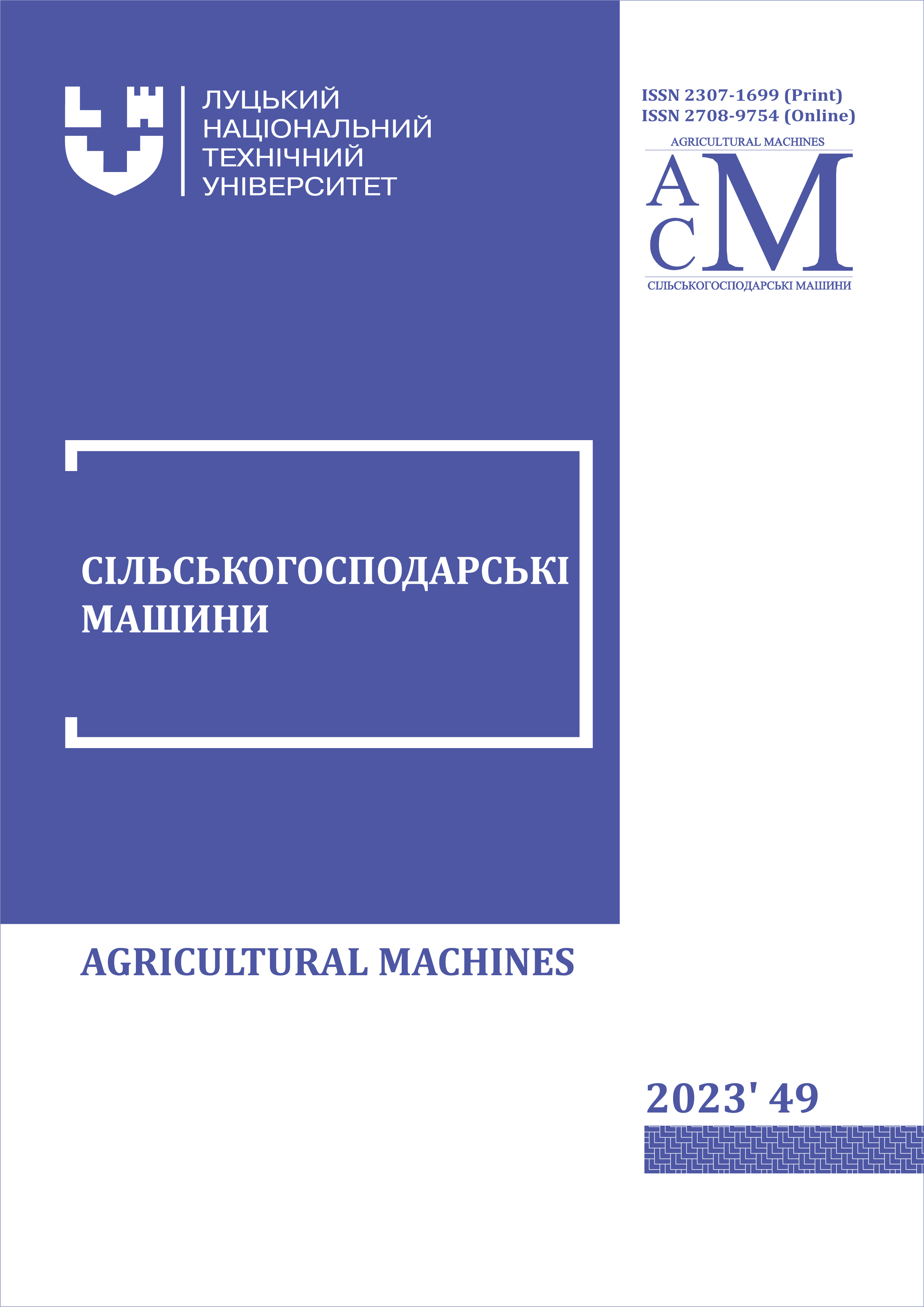FLAX STEM QUALITY ASSESSMENT USING UNMANNED AERIAL VEHICLES
Abstract
As a result of the war, the economy of Ukraine created conditions that require innovative solutions in agricultural production. For example, there was an urgent need to use the cultivated areas of the northern and western parts of Ukraine for crops that were traditionally grown only in the southern regions of the country. Modernization and implementation of innovative technologies in the agro-industrial complex will contribute to the successful and rapid recovery of the economy of Ukraine. Unmanned aerial vehicles are an integral part of modern technologies that can be used in agriculture. It is proposed to use unmanned aerial vehicles to evaluate the quality indicators of the stem of linseed and fibre flax. Flax is of great practical value as its crop is used extensively in the food and non-food industries. The amount of flax grown in the world is increasing every year. The technique of using unmanned aerial vehicles can be based on the monitoring and analysis of the colour characteristics of the flax stem obtained with the help of photographic equipment. In order to implement the method of assessing quality indicators of flax with the help of unmanned aerial vehicles, it is necessary to create calibration tables of colour characteristics of plants depending on the ripening phase, length and moisture content of stems, as well as fibre content. The application of the method of flax stem quality assessment with the use of unmanned aerial vehicles allows to: obtain data for detailed on-line monitoring of the condition of linseed and fibre flax crops; select with high accuracy a rational technology of flax processing taking into account the qualitative and quantitative indicators of the flax stem and achieve high efficiency of using all the biological potential of this crop. The proposed method of crop condition assessment is universal and can be used by agro-industrial enterprises and farms for research of other agricultural crops.
References
Drone Engr. (n.d.). Baby shark VTOL 250 Fixed wing air frame for UAV building. Retrieved May 5, 2023, from https://www.droneassemble.com/product/baby-shark-vtol-250-fixed-wing-kit-air-frame-for-uav-building/
Dudarev, I., & Say, V. (2020). Development of resource-saving technology of linseed harvesting. Journal of Natural Fibers, 17(9), 1307-1316.
Edan, Y., Han, S., & Kondo, N. (2009). Automation in agriculture. In S. Y. Nof (Ed.), Springer handbook of automation (pp. 1095-1128). Berlin, Heidelberg: Springer.
FAOSTAT. (n.d.). Compare Data. Retrieved May 2, 2023, from https://www.fao.org/faostat/en/#compare
Sylvester, G. (2018). E-Agriculture in action: drones for agriculture. Bangkok: Published by Food and Agriculture Organization of the United Nations and International Telecommunication Union.
Trade Map. (n.d). ДМСУ, продовольчий експорт (DMSU, food export). Retrieved May 5, 2023, from https://www.trademap.org/Index.aspx
Vroegindeweij, B. A., van Wijk, S. W., & van Henten, E. (2014). Autonomous unmanned aerial vehicles for agricultural applications. Zurich, Switzerland.
Wingtra. (n.d.). VTOL drone – WingtraOne GEN II. Retrieved May 5, 2023, from https://wingtra.com/mapping-drone-wingtraone/vtol-drone/
Yaheliuk, S., Didukh, V., & Boyko, G. (2020). The improved technology of biomass processing to obtain products of various applications. Agricultural Machines, 45, 155-164. https://doi.org/10.36910/acm.vi45.382
Yinka-Banjo, C., & Ajayi, O. (2020). Sky-farmers: Applications of unmanned aerial vehicles (UAV) in agriculture. Autonomous Vehicles. IntechOpen. https://doi.org/10.5772/intechopen.89488
Налобіна, О. О. (2008). Механіко-технологічні основи процесів взаємодії робочих органів льонозбирального комбайна з рослинним матеріалом (Mechanical and technological bases of the processes of interaction of the working bodies of the flax harvester with plant material) [Дисертація д-ра техн. наук]. Луцький державний технічний університет, Луцьк.
Сай, В., Дідух, В., & Тараймович, І. (2009). Перспективи вирощування льону олійного на Волині (Prospects for growing oilseed flax in Volyn). Легка промисловість, 3, 10-11.
УКРСТАТ. (n.d.). Сільське господарство України (Agriculture of Ukraine). Retrieved May 5, 2023, from https://ukrstat.gov.ua/druk/publicat/kat_u/2021/zb/09/zb_sg_20.pdf
Хайліс, Г., Харчук, О., Толстушко, М., & Толстушко, Н. (2013). Аналіз розстилальних пристроїв льонозбиральних машин (Analysis of spreading devices of flax harvesting machines). Сільськогосподарські машини, 26, 120-124.
Юхимчук, С. Ф. (1998). Обґрунтування параметрів і дослідження роботи льонобральних апаратів з поперечними рівчаками (Justification of the parameters and study of the operation of the flax-pulling devices with transverse flows) [Дисертація канд. техн. наук]. Луцький державний технічний університет, Луцьк.
Ягелюк, С., & Дідух, В. (2020). Концептуальна модель технологій переробки стебел льону (A concept model of technologies for processing flax stems). Сільськогосподарські машини, 44, 155-164. https://doi.org/10.36910/agromash.vi44.300
Ягелюк, С., & Дідух, В. (2021). Формування якості льняної продукції (Flax product quality formation). Луцьк: ЛНТУ.











